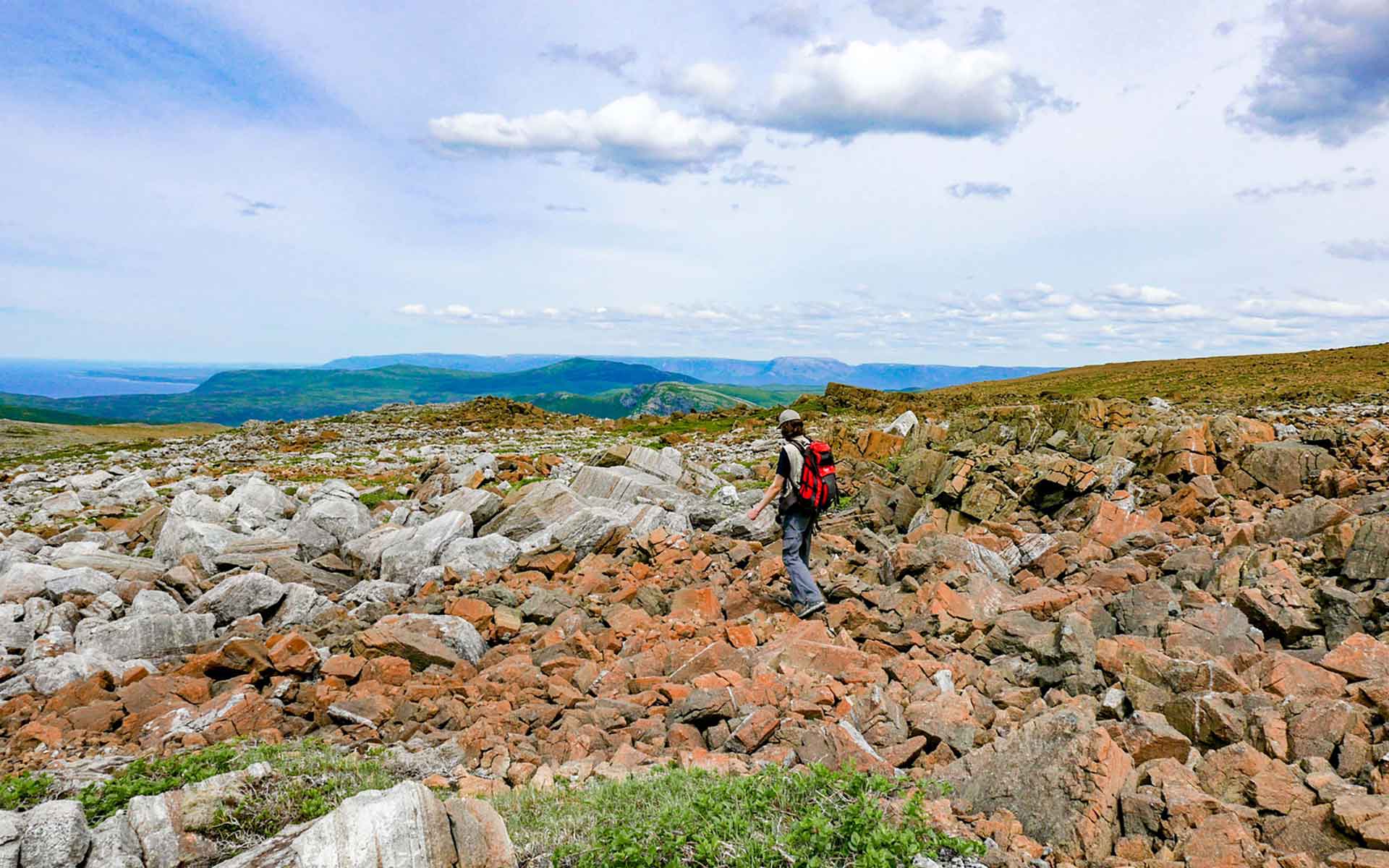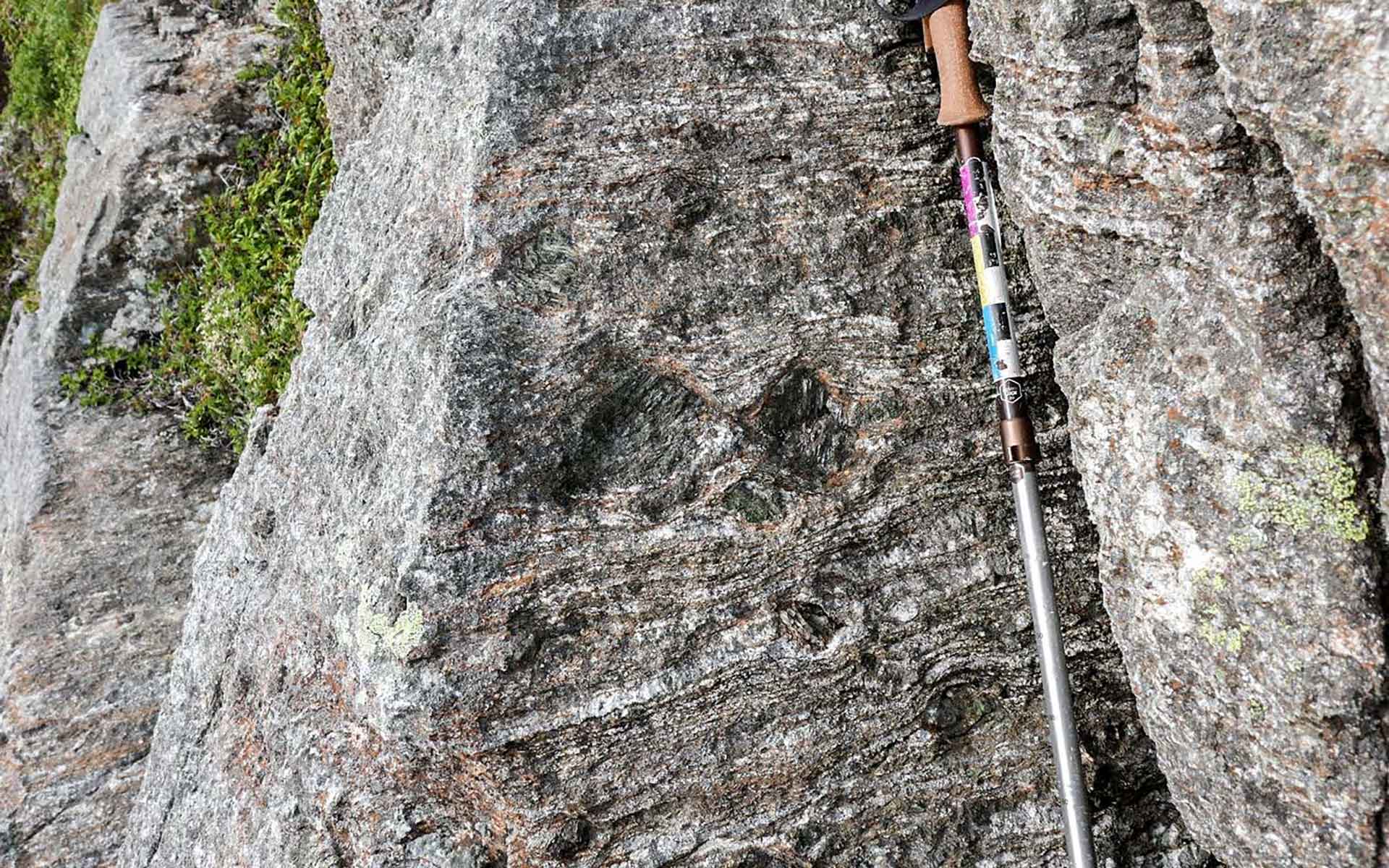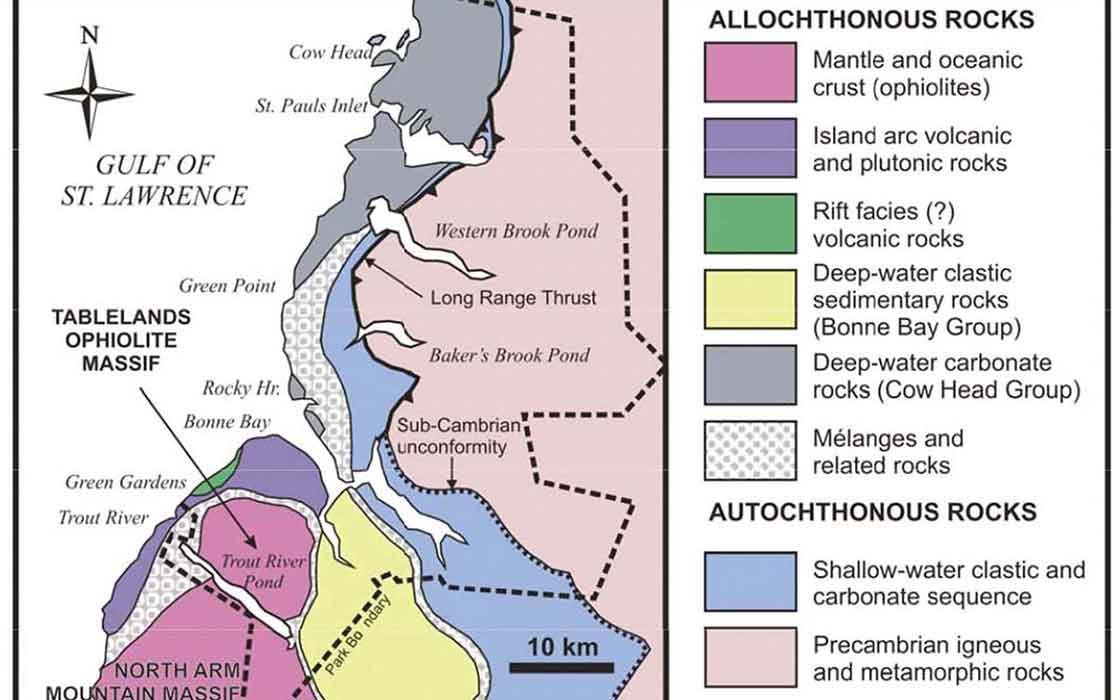
Rocks of the Moho exposed on the tablelands of Gros Morne. (Photo: John Waldron, University of Alberta).
Geological Period
Cambrian – Ordovician
Main geological interest
History of geoscience
Tectonics
Location
Gros Morne National Park Newfoundland, Canada.
49°27’56.0″N, 58°02’22.0″W
Rocks of the Moho exposed on the tablelands of Gros Morne. (Photo: John Waldron, University of Alberta).
One of the world’s best exposures of the moho, the boundary between oceanic crust and mantle rocks, preserved at the earth’s surface in a dramatic glacial landscape.
Gros Morne was inscribed on the list of the World’s Heritage as an exceptional illustration of seldom seen plate tectonic processes and of a glacially modified coastal landscape of deep fjords and ‘tabletop’ highlands. It allows visitors to stand on the ‘Moho’, a boundary that is normally buried 5 to 70 km beneath the Earth’s surface. Gros Morne played a seminal role in the development of plate tectonic theory and the understanding of processes involved in building mountain belts.
- Geological description
The deep fjords and barren plateaux of Gros Morne National Park in western Newfoundland expose rare examples of rocks from the Earth’s deep ocean crust and mantle, and their contact, the ‘Moho’ or Mohorovičić discontinuity. These oceanic rocks – ophiolites – are exposed here due to exceptional tectonic events that obducted deep, seldom seen mantle rocks toward the Earth’s surface approximately 470 million years ago as plate tectonics closed the Iapetus Ocean and gave birth to the Appalachian mountain belt. Exposed to view by glacial erosion, the ultramafic rocks are geochemically inhospitable to most plant life, resulting in the barren, otherworldly landscape known as the ‘Tablelands’. Gros Morne was at the heart of the great revolutionary theory of plate tectonics in the 20th century, leading to concepts of how ancient oceans closed and how ancient orogenic systems – mountain belts — formed.
- Scientific research and tradition
The geology of Gros Morne and the Bay of Islands ophiolite has played a key role in our understanding of the formation both the continental and oceanic crust through the GEOLOGICAL PERIOD Cambrian – Ordovician History of geoscience Tectonics MAIN GEOLOGICAL INTEREST Gros Morne National Park Newfoundland, Canada. 49° 27′ 56” N 058° 02′ 22” W LOCATION MOHOROVIČIĆ DISCONTINUITY AT GROS MORNE NATIONAL PARK CANADA Closeup of structures produced during mid-ocean ridge deformation of hot magmatic rocks at Gros Morne. (Photo: John Waldron, University of Alberta). UNESCO World Heritage Site processes of plate tectonics. Gros Morne is one of the world’s most profound examples of plate tectonics writ large in the rock record.
- Reference
https://doi.org/10.1029/JB076i005p01460
Dewey, J.F. and Bird, J.M. (1971) ‘Origin and emplacement of the ophiolite suite: Appalachian ophiolites in Newfoundland’, Journal of Geophysical Research (1896-1977), 76(14), pp. 3179–3206. Available at:
https://doi.org/10.1029/JB076i014p03179
Dewey, J.F. and Casey, J.F. (2013) ‘The sole of an ophiolite: the Ordovician Bay of Islands Complex, Newfoundland’, Journal of the Geological Society, 170(5), pp. 715–722. Available at:
Kerr, A. (2019) ‘Classic Rock Tours 2. Exploring a Famous Ophiolite: A Guide to the Bay of Islands Igneous Complex in Gros Morne National Park, Western Newfoundland, Canada’, Geoscience Canada, pp. 101–136. Available at:
https://doi.org/10.12789/geocanj.2019.46.149
Williams, H. (1979) ‘Appalachian Orogen in Canada’, Canadian Journal of Earth Sciences, 16(3), pp. 792–807. Available at:
- Author(s)
Andrew Kerr
Department of Earth Sciences, Memorial University, St. John’s NL Canada
John W.F. Waldron
Department of Earth Sciences, University of Alberta, Edmonton, AB, Canada
John H. Calder
Cliffs of Fundy UGGp, Canadian Geoparks Network and Saint Mary’s University, NS, Canada


